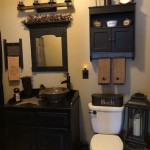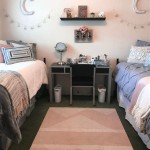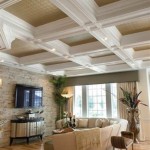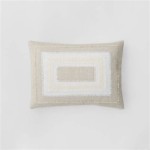Decorative Ceiling Ideas For Living Room
The living room, often the heart of a home, deserves careful consideration in its design. The ceiling, frequently overlooked, presents a valuable opportunity to enhance the room's aesthetic appeal and overall ambiance. Decorative ceilings can transform a mundane space into a visually captivating environment, reflecting personal style and architectural character. This article explores various decorative ceiling ideas suitable for living rooms, encompassing different styles, materials, and techniques.
False Ceilings: Functionality Meets Design
False ceilings, also known as dropped ceilings or suspended ceilings, are secondary ceilings installed below the main structural ceiling. They offer a multitude of benefits, including concealing unsightly wiring, ductwork, and plumbing, while simultaneously improving acoustics and energy efficiency. Furthermore, false ceilings provide a platform for incorporating various decorative elements, allowing for customized designs that complement the living room's overall theme.
Gypsum board is a commonly used material for false ceilings due to its versatility, affordability, and ease of installation. It can be shaped into various forms, including flat panels, curved surfaces, and intricate patterns. Gypsum ceilings can be painted in any color or finished with textures to create a desired look. Furthermore, they can accommodate recessed lighting, creating a soft and inviting atmosphere. Another common material is Plaster of Paris (POP). POP is a quick-setting gypsum plaster consisting of a fine white powder (calcium sulfate hemihydrate), which hardens when moistened and allowed to dry. It is widely used in creating intricate designs and molding on false ceilings.
Another popular option for false ceilings is wood. Wood ceilings introduce warmth and natural texture to the living room. Timber planks, panels, or beams can be installed in various configurations to achieve different aesthetic effects. For a rustic look, exposed wooden beams can create a sense of grandeur and architectural interest. Alternatively, smooth wooden panels can offer a more contemporary and refined appearance. A key consideration when using wood, however, is its susceptibility to moisture and temperature fluctuations. Proper sealing and ventilation are crucial to prevent warping and damage to the ceiling over time. Faux wood materials are also available, offering the aesthetic of wood without the maintenance concerns.
Beyond materials, the arrangement of the false ceiling elements offers significant design flexibility. A multi-tiered ceiling, with varying heights and depths, can create a dynamic and visually appealing focal point. Geometric patterns, such as squares, rectangles, and circles, can be incorporated into the ceiling design to add a modern touch. Furthermore, strategically placed lighting fixtures, such as spotlights and LED strips, can accentuate the ceiling's design and create dramatic effects.
Ceiling Textures: Adding Depth and Character
Ceiling textures offer a simple and cost-effective way to add depth and visual interest to a living room ceiling. Texturing involves applying a coating of material to the ceiling surface to create a raised or patterned effect. Various techniques and materials can be used to achieve different textures, each offering a unique aesthetic appeal.
One of the most common ceiling textures is popcorn texture, characterized by its bumpy and irregular surface. While often associated with older homes, it remains a popular choice due to its ability to conceal imperfections in the ceiling surface. However, popcorn texture can be difficult to clean and may contain asbestos in older installations, requiring professional removal if renovation is planned.
Orange peel texture, resembling the surface of an orange peel, offers a more subtle and refined alternative to popcorn texture. It is created by spraying a thinned joint compound onto the ceiling surface and then lightly smoothing it with a trowel. This texture provides a textured surface that scatters light and reduces glare, while also concealing minor imperfections.
Knockdown texture is another popular option, characterized by its flattened and slightly irregular surface. It is created by applying a thick layer of joint compound to the ceiling and then using a trowel or knife to "knock down" the peaks and ridges. This texture creates a more contemporary and sophisticated look compared to popcorn texture, while still hiding imperfections effectively.
Beyond these standard textures, various other techniques can be employed to create unique and customized ceiling textures. These include using textured rollers, stencils, or even hand-applied techniques to create patterns and designs on the ceiling surface. The choice of texture will depend on the desired aesthetic effect and the overall style of the living room.
Decorative Painting: Unleashing Creativity on the Ceiling
Painting the ceiling offers a simple yet highly effective way to transform the look and feel of a living room. While a simple coat of white paint can brighten the space and create a sense of openness, decorative painting techniques can add personality, character, and visual interest to the ceiling.
One popular decorative painting technique is color washing, which involves applying a thin layer of translucent paint over a base coat to create a subtle and textured effect. This technique adds depth and dimension to the ceiling, creating a soft and inviting atmosphere. Different colors can be used to achieve different effects, such as a warm and rustic feel or a cool and contemporary look.
Stenciling is another versatile technique for adding decorative patterns and designs to the ceiling. Stencils can be used to create a wide range of patterns, from simple geometric shapes to intricate floral motifs. This technique allows for customization and personalization, enabling homeowners to create a ceiling that reflects their unique style and preferences.
Another artistic option is mural painting that transforms the ceiling into a unique art space. A professionally painted or carefully DIYed mural can depict landscapes, celestial scenes or abstract designs. This high-impact technique requires skill and creativity, but the final result is a bespoke ceiling that elevates the entire living room.
Stripes, whether horizontal or vertical, can also be painted on the ceiling to create a visual illusion of space or height. Horizontal stripes can make a room appear wider, while vertical stripes can make it appear taller. The choice of colors and stripe width will influence the overall effect, allowing for customization to suit the specific dimensions and style of the living room.
Beyond these techniques, various other decorative painting methods can be employed to create unique and customized ceiling designs. These include sponge painting, rag rolling, and even hand-painted designs. The possibilities are virtually limitless, allowing homeowners to unleash their creativity and transform their living room ceiling into a work of art.
Lighting Fixtures: Illuminating the Ceiling's Beauty
Lighting plays a crucial role in showcasing the beauty of a decorative ceiling. Well-chosen lighting fixtures can accentuate the ceiling's design, create dramatic effects, and enhance the overall ambiance of the living room. The type, placement, and intensity of lighting should be carefully considered to achieve the desired effect.
Recessed lighting is a popular choice for living rooms with false ceilings, as it provides a clean and minimalist look while offering ample illumination. Recessed lights can be strategically placed to highlight specific features of the ceiling design, such as geometric patterns or textured surfaces. Dimmable recessed lights offer versatility, allowing for adjustment of the light level to create different moods and atmospheres.
Chandeliers are statement pieces that can add elegance and sophistication to a living room. They are particularly well-suited for rooms with high ceilings, where they can serve as a focal point and draw the eye upward. Chandeliers come in a wide range of styles, from classic crystal designs to modern and minimalist interpretations. The size and style of the chandelier should be carefully considered to complement the overall design of the living room.
Pendant lights are another versatile option for living room lighting. They can be suspended from the ceiling at varying heights to create visual interest and define different zones within the room. Pendant lights are available in a wide range of styles, from simple and understated designs to more elaborate and decorative options. They can be used individually or in clusters to create a dramatic effect.
Track lighting is a flexible option that allows for directing light to specific areas of the living room. It is particularly useful for highlighting artwork, architectural features, or other decorative elements. Track lighting can be easily adjusted to change the direction and intensity of the light, providing versatility and control over the lighting scheme.
LED strip lights are an energy-efficient and versatile option for accent lighting. They can be installed along the edges of the ceiling, behind crown molding, or within false ceilings to create a soft and ambient glow. LED strip lights are available in a wide range of colors, allowing for customization and creation of different moods and atmospheres.
Cornices and Moldings: Adding Architectural Detail
Cornices and moldings are decorative elements that can add architectural detail and visual interest to a living room ceiling. They are typically installed along the perimeter of the ceiling, where it meets the walls, creating a transition and adding a sense of refinement.
Crown moldings are one of the most common types of cornices, characterized by their elaborate and decorative profiles. They are typically made of wood, plaster, or polyurethane and can be painted or stained to match the walls or ceiling. Crown moldings come in a wide range of styles, from simple and understated designs to more ornate and elaborate options. They can add a touch of elegance and sophistication to any living room.
Picture rail moldings are designed to hold picture hooks, allowing for hanging artwork without damaging the walls. They are typically installed a few inches below the ceiling line and can be painted or stained to match the walls or ceiling. Picture rail moldings add a subtle decorative element while also providing a practical function.
Cove moldings are characterized by their concave shape, which creates a smooth transition between the wall and the ceiling. They are typically made of wood, plaster, or polyurethane and can be painted or stained to match the walls or ceiling. Cove moldings add a touch of elegance and sophistication while also concealing imperfections in the wall-ceiling joint.
Dentil moldings are characterized by their repeating pattern of small, rectangular blocks, resembling teeth. They are typically made of wood, plaster, or polyurethane and can be painted or stained to match the walls or ceiling. Dentil moldings add a touch of architectural detail and visual interest to the ceiling.
Chair rail moldings, while traditionally installed on walls, can also be used on ceilings to create a unique and unexpected effect. They can be installed a few inches below the ceiling line, creating a visual separation and adding a touch of architectural detail.
The selection and application of decorative ceiling treatments offer a rich palette to customize living room spaces. Careful consideration of materials, textures, colors, lighting, and architectural details allows homeowners to create a ceiling that not only enhances the room's aesthetic appeal but also reflects their individual style and preferences.

33 Stunning Ceiling Design Ideas To Spice Up Your Home

Ceiling Decoration And Ideas For Your Home Designcafe

55 Latest Pop Ceiling Designs For Hall 2025 Indextap Blogs

Modern Interior Decoration Living Room Ceiling Design Ideas Home One Furniture

5 Decorative Ceiling Beams Ideas For Every Room

Top Pop Design Ideas To Make Your Living Room Gorgeous Wedezine Blog

Decorative Ceilings For Every Space Armstrong Residential

Ceiling Decoration Ideas

33 Modern Ceiling Design Ideas For All The Rooms In Your Home Decoist

False Ceiling Designs You Can Actually Use 72 Rates
Related Posts







